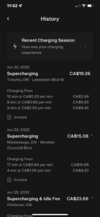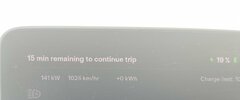@Tadara With a closer look at the tiered price structure, I may have to retract my previous statement about not being affected by charging with another vehicle at a paired station. The tiered rates are set by the amount of power being delivered to your car at any moment. That is also affected by your own state of charge (SoC). Assume for a moment that you are at a 150kW installation. You started your charge at a low SoC without anybody at your paired station. You should be getting almost the maximum power (~150kW), or in other words, the highest cost/kW. As your SoC raises, the power lowers since it's good for the battery to do so. The amount you get charged per kW will also go lower (you go from Tier 3 to Tier 2). Now assume that somebody pulls into the station that's paired with yours and they have a low SoC. They will get the most power and you may drop from Tier 2 to Tier 1. So your cost per kW gets lower but it also means that you'll be connected to the station longer in order to get to your programmed limit.
Being charged by time (tiered rates) is more complicated than being charged by the amount of kWh delivered. Here in California we are charged per kWh so I'm not that familiar with being charged by the minute. Most stations here compensate by having a lower cost/kWh for Level 2 charging (240VAC), than compared to DC Fast charging; what CCS, CHAdeMO and Superchargers are.





